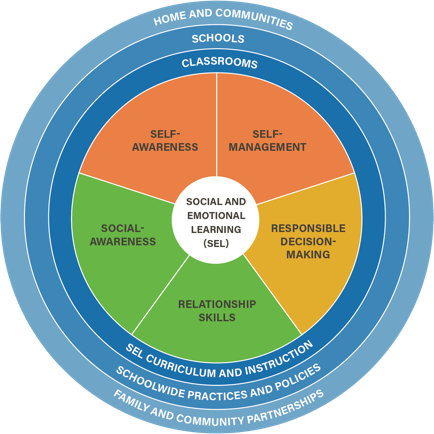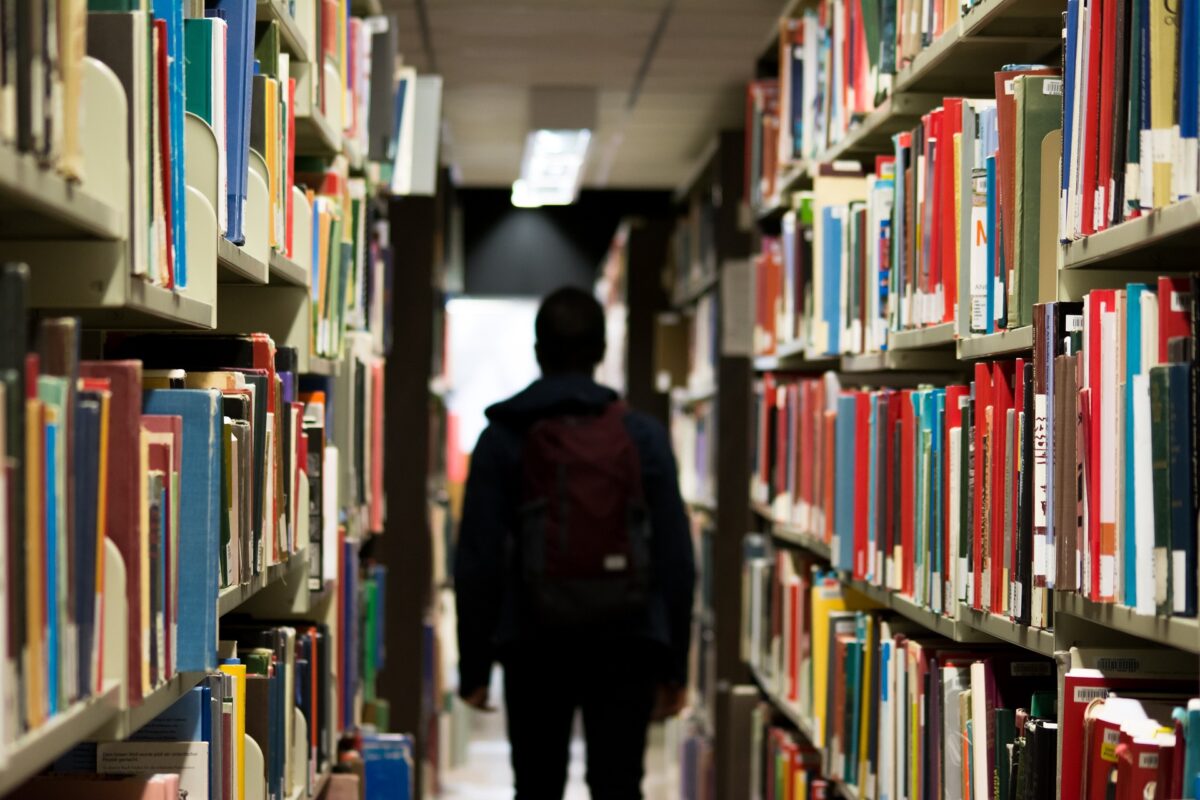When someone mentions the words “school curriculum,” images of math textbooks and foreign language dictionaries flash through most people’s minds. However, a new subject has made its way into New York’s schools: social-emotional learning. Teachers in the past have not included emotions in their formal curriculum. This exclusion has been a disservice to students and teachers. Students and teachers are within schools for most of their days. By not considering the emotional and social well-being of these individuals, the curators of curriculum ignore that people are always experiencing emotions and interacting with others.
In order to address this hole in curriculum, researchers, educators, and school administrators worked together to create a new framework for considering emotions within classrooms. This framework is called social-emotional learning curriculum or SEL. By including this curriculum, teachers and school officials can improve the relationships between teachers and students and make school feel safer.
Social-emotional learning aims to give students the skills to understand and manage their emotions own as well as the emotions of others. In 2018 New York State set benchmarks SEL goals in classrooms. New York State is 1 of 14 states to do so. The goals are to develop skills for self-awareness and self-management, use social awareness and relationship skills, and skills for responsible decision-making.

The Collaborative for Academic, Social, and Emotional Learning (CASEL) goals for social-emotional learning.
There are a number of benefits for students who have experienced SEL. Students with SEL curriculum have shown an 11 percent point gain in their standardized testing. Students have also shown “improved behavior.” Furthermore, students were 42% less likely to engage in physical aggression. The most important benefit is that students showed an increase in self-esteem. Peer relationships and students’ relationship toward school as a whole also improved. Moreover, students felt better equipped to manage emotional distress. For high school students especially, understanding their emotions and having a strong sense of self and confidence is incredibly valuable. At this point in their lives students are beginning to understand and create their own identities before they go out into the adult world.
While SEL has a number of benefits for students, teachers can benefit as well. If students are going to have SEL in the classroom, teachers have to learn what SEL is! Teachers experience incredibly high rates of “burn out”, meaning they feel more stressed and dissatisfied with their job. This in turn negatively impacts their relationships with students because their energy is focused on trying to make it through the day rather than fostering a safer learning environment or building relationships with students. By having to learn SEL skills, teachers’ lives can be improved. A key skill from SEL is recognizing ones emotions; thus, teachers can sooner recognize when they feel stressed and use coping mechanisms to de-stress sooner. Because teachers can better manage their own stress, they spend more time curating a warmer classroom environment and stronger personal relationships with students. In turn, students can also feel respected and safer in their teacher’s classroom. Students learn best in environments they feel comfortable and safer in.
Although SEL can help students feel safer in their classrooms, teachers and administrators cannot assume that all students will feel safer in the same environment. Faculty must implement SEL within the whole school. For instance, disciplinary systems must be changed. Within an SEL framework discipline is focused on hearing the student’s perspective and trying to understand what external reasons could be causing this behavior. Furthermore, “Circle Talk” can enable the classroom or community to be involved in coming to a resolution for any harm caused. When students see faculty members making an effort to understand who they are and truly listen to their perspective, students feel safer in school.
Not only do administrators need to consider the internal context of their schools, they must also be aware external societal context as well. Students do not leave their identities and experiences at the door when they enter school. In order to make schools more equitable, students and teachers must be aware of their own social positions. A way to do this is to develop self-awareness. The skills learned through SEL can help teachers, and students, become aware of and manage implicit biases they may have. It is no mystery that teachers often judge non-white students, particularly black students, more harshly than white students. Teachers being aware of this implicit bias can help to make classrooms more equitable. This step alone is not enough to solve the incredible racism and inequity that permeates the American school system.
In order to achieve the benefits described above, schools and teachers can take a number of actionable steps. A first step faculty could take is ensuring that the student’s emotional well-being is considered and respected in all domains of the school. SEL should not be contained to just one area, but must be supported by the wider context, such as disciplinary action or mental health resources on campus. Teachers can also engage in active listening with their students. Check-ins at the start of class where students have a chance to explain how they are feeling and if they need anything from their peers or teachers just like this teacher in Texas did with hers. Classes can work together to create community guidelines, such as “move up, move back” that asks students to be aware of how much verbal space they are occupying, and have both students and teachers hold each other accountable. Engaging in circle talk, an exercise where students and the teacher sit in a circle to discuss class material or a conflict is another tool for encouraging communication within the class.
SEL is the first step in working to create schools that support not just the academic intelligence of students but also the emotional intelligence. For students and teachers to experience the full benefit of SEL, the whole school must work together to incorporate the goals of SEL. Teachers must implement exercises and community guidelines. School administrators must support teachers by giving them the resources and training needed for SEL and for other classroom needs and their salaries. Teachers, administrators, students, and their families must also commit to making schools more equitable for its marginalized students. If teachers only give space for students to talk about their feelings without addressing structural oppression or inequity, teachers are once again harming students by not trying to end the systemic conditions that have caused so many of the emotions students have. Furthermore, it is critical for schools to expand all curriculums, such as the arts, to be more culturally responsive. But, a place to start is teachers recognizing the humanity in their students through the SEL curriculum.
